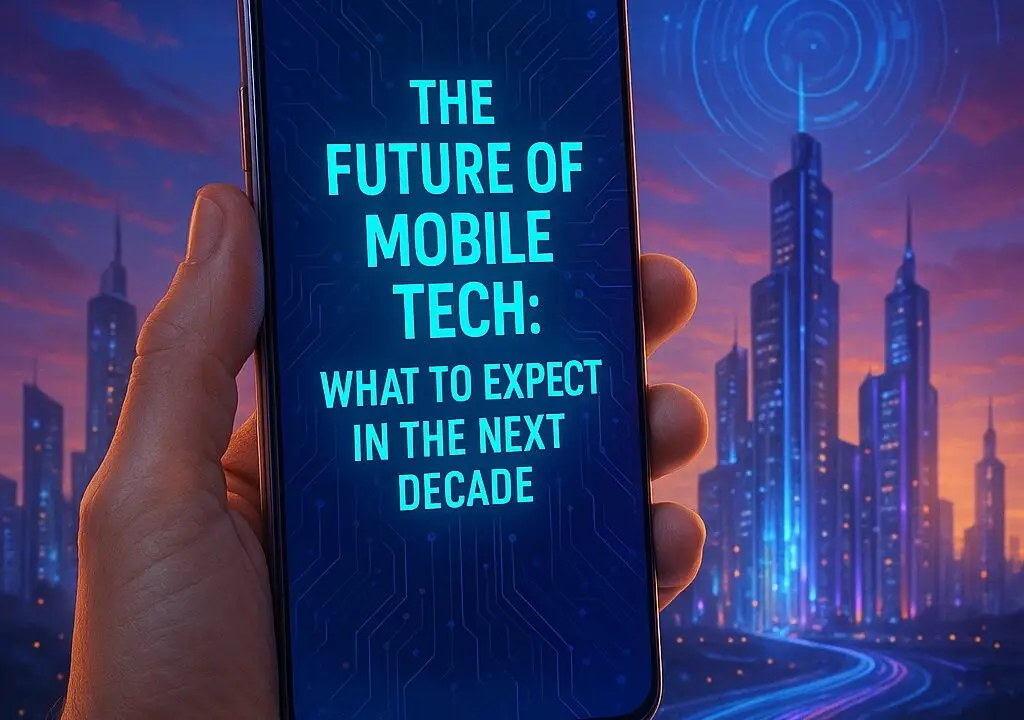
Mobile technology has revolutionized nearly every aspect of our lives—from how we communicate and work to how we shop and socialize. As we look to the future, the next decade promises groundbreaking advancements that will redefine our relationship with mobile devices. This article explores the most anticipated innovations and trends in mobile tech from now through 2035.
One of the most eagerly awaited developments is the launch of 6G networks, expected to arrive by 2030. While 5G has already brought significant improvements in speed and connectivity, 6G aims to elevate the mobile experience even further, offering speeds up to 100 times faster than 5G and latency below 1 millisecond.
With 6G, expect real-time holographic calls, immersive AR/VR experiences, and a seamless Internet of Everything (IoE) ecosystem. It will also be a major enabler for advanced AI-driven mobile applications and autonomous mobile computing.
The concept of foldable phones was once considered futuristic, but brands like Samsung, Motorola, and Huawei have already made them a reality. Over the next decade, expect foldables to become thinner, more durable, and more affordable.
We’ll also see rollable and stretchable screens hitting the mainstream. These devices can expand or compress their display size depending on user needs, making them highly versatile for both work and entertainment. Imagine a smartphone that turns into a tablet with a simple gesture or wraps around your wrist like a smartwatch.
Artificial Intelligence (AI) will continue to be a cornerstone of mobile innovation. Phones will evolve into personal digital assistants, capable of understanding context, tone, emotion, and intention.
AI will revolutionize:
Future mobile AI will be more on-device, reducing the need to send data to the cloud and enhancing user privacy.
Augmented Reality (AR) and Virtual Reality (VR) are expected to become everyday mobile experiences. With hardware becoming more powerful and 6G enabling real-time processing, mobile AR will blend the digital and physical worlds seamlessly.
Applications will expand across industries:
AR glasses connected to smartphones may replace traditional screens, ushering in a post-smartphone era.
As environmental concerns grow, the mobile industry is pivoting toward sustainability. Future smartphones will be designed with:
Companies will also embrace green manufacturing and aim for carbon-neutral operations. Expect more users to demand transparency about their devices’ environmental impact.
By the early 2030s, quantum computing and edge computing could significantly influence mobile capabilities. While quantum processors are unlikely to be housed directly in phones due to their size and complexity, mobile devices will benefit from quantum-powered cloud services.
On the other hand, edge computing will become integral to real-time mobile applications. It brings data processing closer to the user, reducing latency and enabling features like:
Passwords are on their way out. The next decade will see a shift toward multi-layered biometric authentication, including:
In parallel, digital identity solutions embedded in smartphones will replace physical IDs. Governments and private companies are already rolling out mobile driver’s licenses, e-passports, and health records stored securely on mobile devices.
Battery life has long been a limiting factor for mobile devices. Over the next decade, innovations in solid-state batteries, graphene batteries, and fast-charging systems will change that.
These advancements promise:
Wireless charging will become ubiquitous, with long-range charging even becoming possible in public spaces.
The future of mobile connectivity will not be limited to urban areas. With satellite-based mobile networks like Starlink and AST SpaceMobile, users in remote or underserved locations will have consistent internet access.
This global coverage will empower:
Smartphones will come equipped with native satellite antennas, enabling communication even where traditional cell towers don’t exist.
The next decade of mobile technology promises unprecedented innovation. From 6G networks and AI integration to sustainable materials and quantum computing, the mobile devices of 2035 will be smarter, more efficient, and more integral to our daily lives than ever before.
As these technologies converge, mobile phones may evolve into wearable hubs or even implanted interfaces, blurring the line between human and machine. One thing is certain—the way we interact with technology will be fundamentally transformed.
Businesses, developers, and users alike should stay ahead of these trends, embracing the future of mobile with open minds and forward-thinking strategies.
Keywords Recap: future of mobile technology, 6G, foldable phones, mobile AI, augmented reality, sustainable smartphones, quantum computing, biometric security, mobile batteries, satellite mobile connectivity